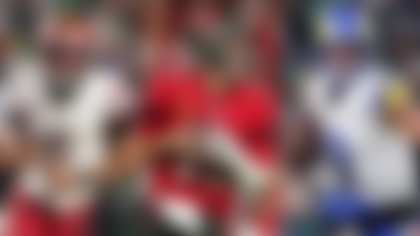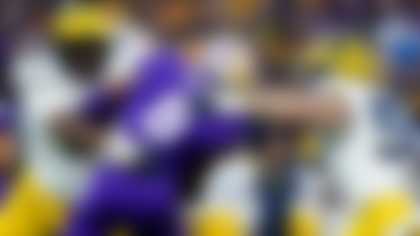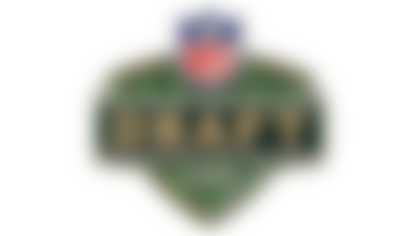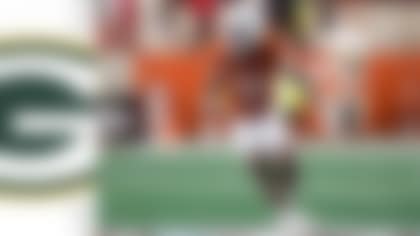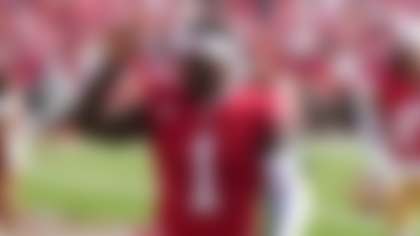With Michael Vick's hamstring injury, Nick Foles is expected to step into the starting quarterback role for the Philadelphia Eagles' road game against the Tampa Bay Buccaneers. This news has led to speculation that coach Chip Kelly might be forced to abandon parts of the read-option scheme that currently has Philly ranked second in the NFL in total offense.
Although the loss of Vick's athleticism and running skills certainly would alter Kelly's game plan, don't expect the Eagles to dramatically change their approach with Foles under center.
After taking a deeper look at Philadelphia's All-22 Coaches Film, here's what I expect the Eagles to do on offense Sunday:
1) The Eagles still will run the read option.
Kelly's offense has been met with skepticism from traditionalists who question heavy utilization of the read option, but there is no denying the success of the Eagles' running game. Philadelphia comfortably leads the NFL in rushing yards per game, partially due to the confusion created by the read option at the point of attack. With Vick at the controls, opponents were forced to assign a defender to the quarterback, reducing the number of defenders in the box to stop LeSean McCoy. As a result, opponents were unable to effectively bottle up the Eagles' ground game.
Although Foles definitely is not a dangerous runner like Vick, the Eagles will continue to use the read option. The simple threat of the quarterback keeping the ball or firing a bubble screen to the perimeter is enough to keep a handful of defenders from pursuing the ball aggressively, which leads to bigger running lanes on the front side.
In the screengrab below, taken from the Eagles' Week 4 loss to the Denver Broncos, Philadelphia breaks the huddle in a trips formation to the left. Chris Polk is aligned at running back beside Foles in the backfield:
On the snap, the Eagles run an inside-zone/bubble-screen combination, with Foles assigned to read the defensive end at the mesh point. With the end rushing upfield to take away the quarterback keeper, Foles hands the ball to Polk on an inside rush:
The Eagles pick up 28 yards on the scamper.
The following play, from the Eagles' Week 5 win over the New York Giants, provides another example of how Philadelphia runs the read option with Foles at quarterback. The team breaks the huddle in a trips alignment, with McCoy positioned at halfback on the left. The Eagles are poised to run an inside zone read, with Foles instructed to read the defensive end to his left:
Foles takes the snap, places the ball in McCoy's belly and observes the reaction of the defender. With the end crashing hard in pursuit of McCoy, Foles pulls the ball and races around the edge:
While the Eagles gain just 3 yards on the play, this displays how Philly can use Foles on the run, despite the quarterback's lack of exceptional speed or quickness.
In the next series of screengrabs, from the Eagles' preseason defeat of the Carolina Panthers, Philadelphia unveils a modified triple-option play with Foles at quarterback. The Eagles break the huddle in a dubs formation with the ball on the left hash:
After the snap, Foles sticks the ball in the belly of running back Bryce Brown and reads the reaction of the defensive end. Meanwhile, slot receiver Jason Avant is running a bubble screen to act as the long-distance pitch back if Foles keeps the ball:
As Foles gets to the perimeter, he feels the flat defender committing to him, so he fires the ball to Avant for a positive gain:
2) The wide receiver screen will re-emerge in the game plan.
One of the concepts Kelly likes to prominently feature in his offense is the wide receiver/bubble screen. He will throw the quick screen to any receiver on the field to take advantage of loose coverage on the outside. The Eagles also routinely attach a bubble/quick screen to the back side of the zone read, giving the quarterback another option against an attacking defense. Not only does this discourage opponents from adding secondary defenders to the box (to defend the inside/outside zone), it also gives the Eagles an effective counter-tactic with which to defeat blitz-man coverage on the outside.
On the snap, Foles fires the ball out to Jeff Maehl on the quick screen. A solid block by Zach Ertz provides a clear lane to the end zone for a 6-yard score:
With opponents looking to load up the box to defend the Eagles' ground attack, Kelly can throw more bubble/quick screens, taking advantage of the soft coverage with Foles in the game. These high-percentage passes not only exploit the vulnerability of the defense, they get the ball out of Foles' hands quickly and give dangerous playmakers an opportunity to bust a big gain with minimal risk.
3) Expect bunch-formation passing plays designed to create confusion.
Power Rankings: Back in business?
Time to take the Jets and Raiders seriously? Elliot Harrison reconsiders their status. Plus, the Chiefs hit a new high. **More ...**
Studying the Eagles' offense throughout the season, I've noticed a ton of bunch and stacked formations on the perimeter. By closely aligning two or more receivers in space, the Eagles are able to thwart opponents' attempts to play press coverage on the outside while also creating confusion for defenders in man or zone coverage with various scatter routes. These concepts are difficult to defend in man coverage because of the potential picks created by multiple crossing routes; meanwhile, zone droppers have a tough time executing pattern reads to effectively match up with receivers. As a result, the Eagles frequently are able to get receivers loose on the perimeter for big gains.
In the screengrab below, the Eagles are aligned in a bunch formation to the right, with DeSean Jackson positioned as the inside slot receiver. The close alignment of the receivers forces Giants defenders to line up at different levels to avoid potential picks:
The Eagles are running an outside flood play with Riley Cooper clearing the zone on a post route, Avant running a stutter-flat route and Jackson executing a sail route to the corner:
Once Cooper takes the outside corner out of the picture with the post route, Jackson has plenty of room for the sail route to the sideline:
Foles anticipates the open window and delivers a dime for a 28-yard gain.
The Eagles also use the threat of the bunch formation to create isolation opportunities for the receiver on the back side. This is particularly effective against teams that dramatically shift their coverage to the bunch, leaving the back-side cornerback on an island (without safety help).
In the next screengrab, the Eagles break the huddle with the bunch formation set to the right. Maehl, who is positioned on the left with a one-on-one matchup, is assigned to run a post route to take advantage of the vulnerable area of the defense:
On the snap, Maehl quickly eats up the cornerback's cushion and slips past him on the post:
Foles reads the coverage and hits Maehl for an easy 37-yard gain.
With Vick at the controls, Chip Kelly's offense emerged as one of the most dangerous units in the NFL, incorporating a general spread philosophy and various read-option concepts. The insertion of Foles definitely would take away some of the designed quarterback runs; still, Kelly has demonstrated an ability to tweak the playbook to accentuate the assets of his signal-caller. Given Foles' strengths as a quick-rhythm passer and solid decision-maker, Kelly would continue to run his up-tempo, read-option system -- albeit with a slightly different twist.
Follow Bucky Brooks on Twitter @BuckyBrooks.



